Screening and Assessment
If you are a busy teacher to find out how to improve skills and knowledge on screening an assessment, read this.
Screening and Assessment
If you are a busy teacher to find out how to improve skills and knowledge on screening an assessment, read this.
Be aware that there is no single test to identify dyslexia.
What is screening?
Screening is a broad examination of areas where those with dyslexia may have difficulties. The purpose of screening is to look at a broad range of performance indicators to narrow down the possibilities. Aspects of screening include monitoring progress, skills assessment and careful observation.
How do I work out if I have the skills to screen
Teacher knowledge is the first step in screening students. Observing the pupil in the classroom, seeing that they are not making the same progress as their peers is the time to ask why this is the case? This type of observation should be done throughout education, but particularly at times of entry and transition from one phase to another.
Get to know the characteristics of dyslexic learners
What to look for, signs of difficulty that should be noted:
Use signs of difficulty to identify those with literacy and dyslexic difficulties
There are also screening tools. These are very quick to administer but, by their very nature, do not give an in depth picture of the individual’s difficulties. Screener results do not represent formal diagnosis. They can give an indication of the potential for a problem – this can then be explored in more depth through a full assessment.
Screening tools can help identify those students who are “at risk” for reading difficulty. When problems are found in these areas, targeted intervention should begin immediately, even if dyslexia is suspected. A formal diagnosis of dyslexia does not have to be made in order to offer early intervention in reading instruction.
Observing formal and informal identification methods
How do I know whether to screen or assess?
Teacher knowledge and observation as noted above are key. Or concerns raised by parents might indicate further exploration is warranted. Screening should be done at regular intervals as educational demands change as students progress through education. So some form of screening can be useful at transition stages particularly where children may not formerly have been identified. It is important to put steps in place as early as possible.
Use a staged or graduated approach. Where issues have been identified and students do not respond and there is little progress then it is time to seek a full assessment.
What is assessment?
There is no single test to identify dyslexia.
Assessment refers to a full diagnostic assessment, a comprehensive assessment to determine whether the person’s learning problems may be specific to reading or whether they are related to other difficulties.
The assessment be based on a selection of a series of tests (or sub-sections of tests) chosen on the basis of their measurement properties and their potential to address referral issues. While a variety of tests may be used, the components of a good assessment remain the same. Special attention should be paid to gathering data in areas such as: expressive oral language, expressive written language, receptive oral language, receptive written language, cognitive processing and educational achievement. The assessment will enable careful observation, noting strategies used and whether tasks were addressed easily or slowly and with much effort. The results should show the pattern of strengths and weaknesses and give recommendations for remediation.
People may be tested for dyslexia at any age. The tests and procedures used will vary according to the age of the person and the presenting problems. For example, testing with young children often looks at phonological processing, receptive and expressive language abilities and the ability to make sound/symbol associations.
How do I work out if I have the skills to assess?
This should always be carried out by a certified professional, or team of professionals, qualified to assess, e.g. Practitioner Psychologist specialising in Specific Learning Difficulties or Specialist Teacher/Assessor with an AMBDA level or SASC approved qualification. Professionals with expertise in several fields are best qualified to make a diagnosis of dyslexia. The testing may be done by a single individual or by a team of specialists. A knowledge and background in psychology, reading, language and education is necessary. The tester must have a thorough working knowledge of how individuals learn to read and why some people have trouble learning to read. They must also understand how to administer and interpret evaluation data and how to plan appropriate reading interventions.
The Professional Development Framework shows how knowledge and skills are related to roles. – [Framework Stages and how they relate to roles associated with teaching and supporting of learners with dyslexia/SpLD]
The following organisations can help with dyslexia assessments.


